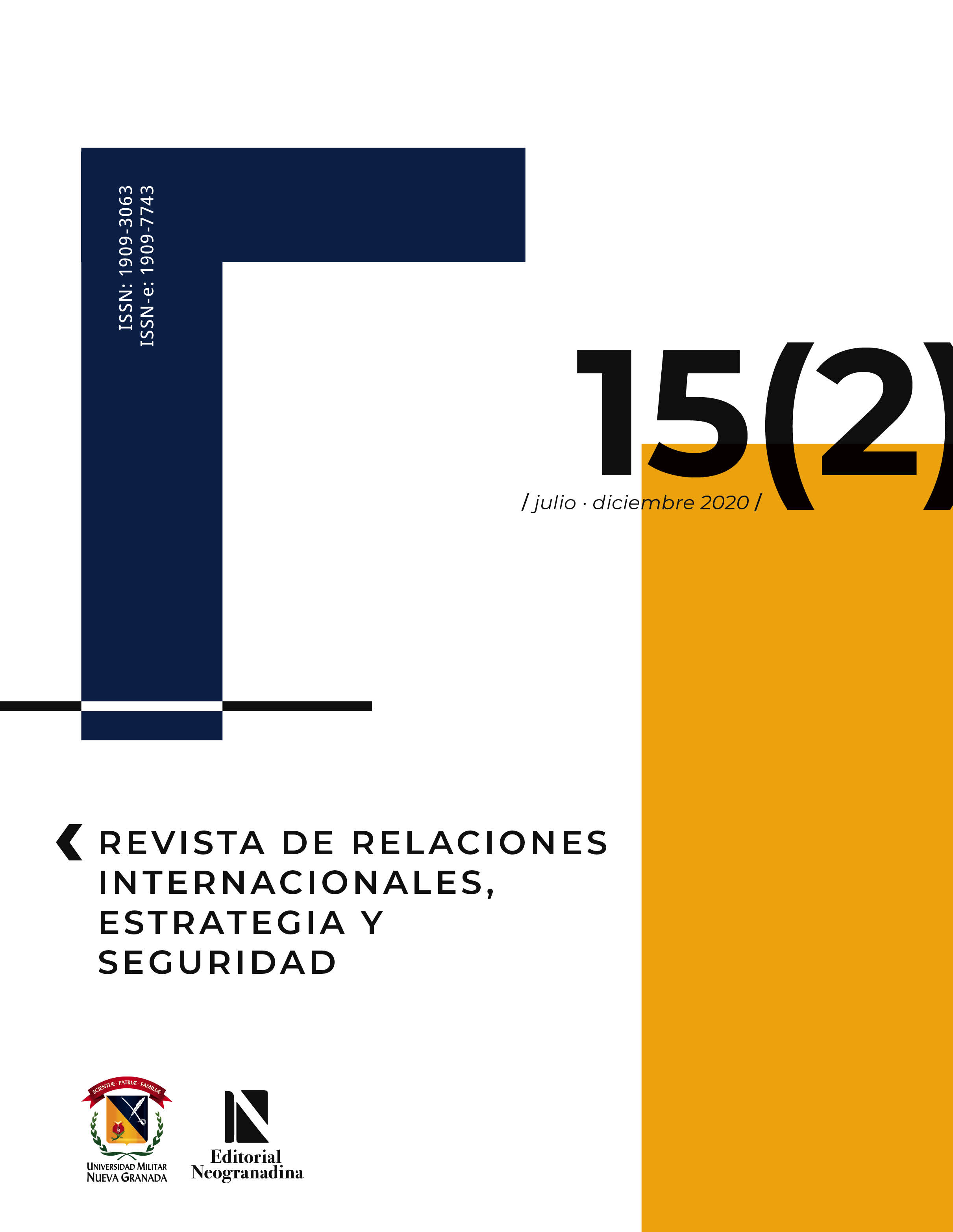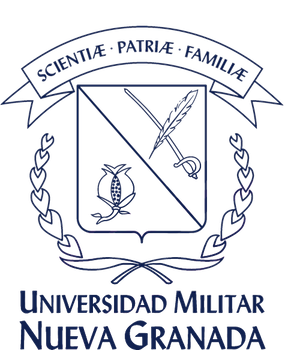The Counterinsurgency Strategy in the Colombian Armed Conflict from Defensive Realism (1962-1966)
Abstract
This article starts from the following question: How can a weak threat become an actual threat, even in the absence of a specific one? To answer it, it is hypothesized that the factors that could lead to this, in the case of the implementation of the Alliance for Progress, are: 1) the opposing views between military and diplomatic officials; 2) the conveyance of biased information by decision makers from an allied country, and 3) the influence of pre-existing belief systems. The innovative approach proposed uses the theory of defensive realism to assess the role of both material capacities and decision-makers’ perceptions in creating an actual threat from a weak one. It is concluded that cognitive aspects may result in overestimation of a threat due to the wrong arrangement of material capacities.Downloads
References
Aviles, W. (2006). Paramilitarism and Colombia's Low Intesity Democracy. Journal of Latin American Studies, 38(2), 379-408.
https://doi.org/10.1017/S0022216X06000757
Evera, S. van. (1998). Offence, Defense, and Causes of War. International Security, 22(4), 5-43.
https://doi.org/10.1162/isec.22.4.5
Griffin, G. M. (1986). United States counterinsurgency in Latin America: its origins, methods and effects. Ann Arbor: Southern Conneticut State University.
Horowitz, D. (1964). The Alliance for Progress. The socialist register, 1, 127-145.
Hylton, F. (2010). Plan Colombia: The Measure of Success. Brown Journal of World Affairs, 17(1), 99-115.
Lizarazo, N. J. (1990). Política Exterior Colombiana 1962-1966: Anticomunismo, Multilateralismo e Integración Fronteriza. Colombia Internacional, (10), 54-66.
https://doi.org/10.7440/colombiaint10.1990.01
Lleras Camargo, A. (1963). The Alliance for Progress. Foreign Affairs, 42, 25-37.
https://doi.org/10.2307/20029666
May, E. R. (1963). The Alliance for Progress in Historical Perspective. Foreign Affairs, 41(4), 757-774.
https://doi.org/10.2307/20029658
Palacios, M. (2012). Violencia Pública en Colombia 1958-2010. Bogotá: fce.
Pizarro-Leongómez, E. (1989). Los orígenes del movimiento armado comunista en Colombia (1949-1966). Análisis Político, (7), 7-32.
Rempe, D. M. (2002). Counterinsurgency in Colombia: A United States National Security Perspective 1958-1966. Miami: umi.
Rojas, D. M. (2010). La Alianza para el Progreso en Colombia. Análisis político, 23(70), 91-124.
Rueda Santos, R. (2000). De la guardia de las fronteras a la contrainsurgencia: elementos de la evolución política e institucional del Ejército colombiano 1958-1965. Bogotá: Icfes.
Stokes, D. (2003). Why the end of the Cold War doesn't matter: the US war of terror in Colombia. Review of International Studies, 29(4), 569-585.
https://doi.org/10.1017/S0260210503005692
Taliaferro, J. W. (1998). Quagmires in the Periphery: Foreign Wars and Escalating Commitment in International Conflict. Security Studies, 7(3), 94-144.
https://doi.org/10.1080/09636419808429352
Taliaferro, J. W. (2000). Security Seeking under Annarchy: Defensive Realism Revisited. International Security, 25(3), 128-161.
https://doi.org/10.1162/016228800560543
Taliaferro, J. W. (2004). Power Politics and the Balance of Risk: Hypotheses on Great Power Intervention in the Periphery. Political Psycology, 25(2), 177-211.
https://doi.org/10.1111/j.1467-9221.2004.00368.x
Vargas-Velásquez, A. (2010). Las fuerzas armadas en el conflicto colombiano: antecedentes y perspectivas. Medellín: La Carreta Editores.
Walt, S. M. (1985). Alliance Formation and the Balance of World Power. International Security, 9(4), 3-43.
https://doi.org/10.2307/2538540
Walt, S. M. (1989). The case for Finite Containment: Analyzing U.S. Grand Strategy. International Security, 14(1), 5-49.
https://doi.org/10.2307/2538764
Yarborough, W. (1962). Unconventional Warfare: One Military View. Annals of the American Academy of Political and Social Science, 341(1), 1-7.












